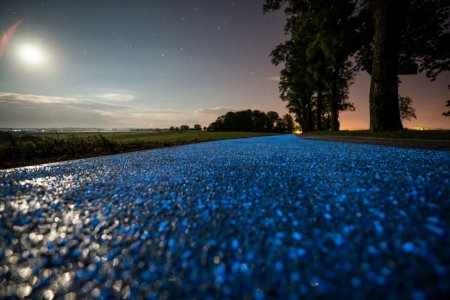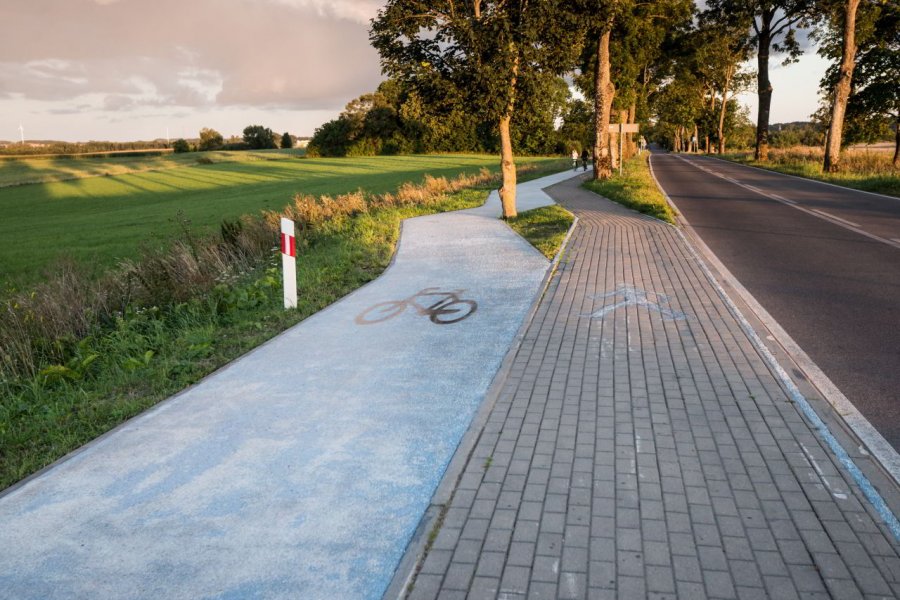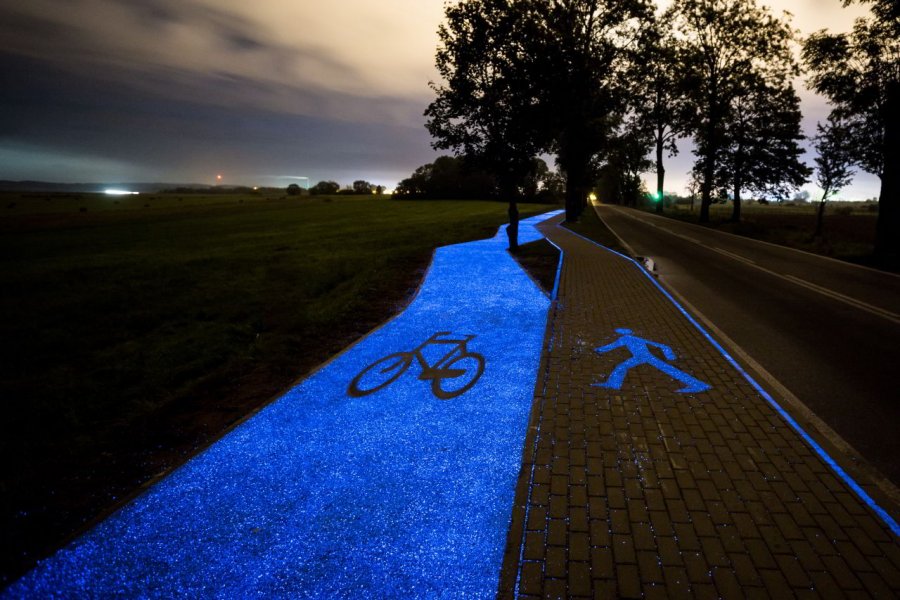All that is needed to light the roughly 100-metre long and two-metre wide experimental section of a bike path in the Lidzbark Warmiñski region is natural light over the course of the day coupled with the properties of a special synthetic substance. No other source of energy is required. And that is precisely what makes this novelty stand out vis-à-vis others.
The asphalt surface of the cycle path comprises a chemical compound containing luminophores. In simple terms, the substance absorbs the electromagnetic radiation in the visible, ultraviolet or infrared ranges and emits the accumulated energy in the form of light after dark. In the case of the cycle path, the luminescent particles are blue: they are charged by the sun, a powerful source of energy, during the day and emit soft blue light for up to ten hours after the sun goes down. This process is repeated on a daily basis.
The current test phase will serve to gather data on the response of the surface material to atmospheric variables and daily use in order to verify the design brief, and continue to improve the technology, reduce production costs, and possibly find new uses for it.
The project is a joint venture between the TPA Quality Assurance laboratories in Pruszków/PL, where research has been going on for a long time on colour and light-reflecting asphalt, and the European construction company Strabag. The goal is to enhance the safety of cyclists by providing aesthetic, economical and environment friendly solutions. Luminophores, the luminescent particles used in the asphalt material, may have different colours. Here blue was selected as the colour that best suits the picturesque landscape, and for visibility reasons after dark. The colour combinations yellow-green and green-blue, as well as the colour blue itself, have strong luminescent properties. Natural soiling during the autumn or winter undermine the glow effect. In addition, the quality of the light during these seasons results in the period of luminescence being considerably shorter (on average until midnight). At the same time, the blue colour appears brighter to the eye. In the summertime, the construction is able to emit light until dawn. Observations have shown: the higher the temperature and brightness of the daylight, the longer and stronger the luminescent effect. The goal is to process the technology using automated techniques in future, which would enable the material to be incorporated evenly and durably while laying the asphalt – and still save costs.
The developers have a multitude of other ideas as to how the material could be used, emphasising that the technology is designed for application in "dark places" but may not
be able to guarantee that the light emitted at night will remain at the same intensity. And nature is heavily involved in all this. Even if blue light can be disturbing for flora and fauna – the bright alternative in the form of spotlights or classic road lighting definitely is. Right now, the pilot project has become something of
an attraction for people who want to see the mystic blue glow of the bike path with their own eyes. Compared with standard bike lighting in the form of dynamos, LEDs, reflectors or bike helmets with light, this idea does appear to be extremely effective and pretty clever too. Revolutionising "soft mobility" and making it a whole lot safer in future.
The downside: the lighting industry is not likely to be enthusiastic about this development.


